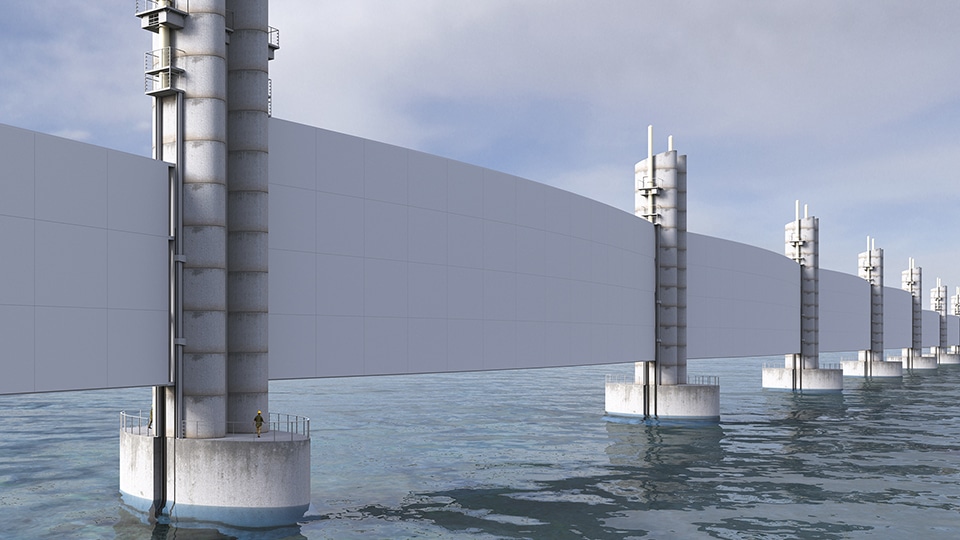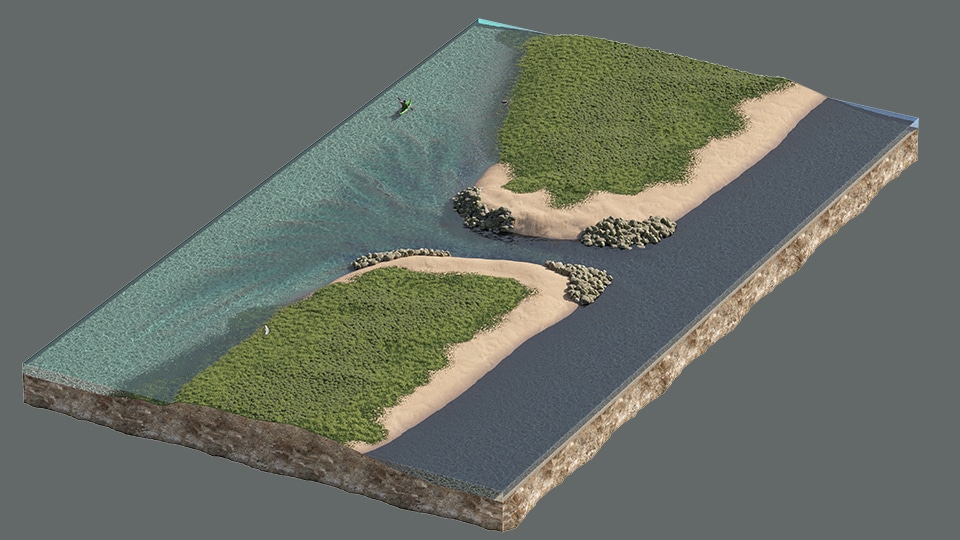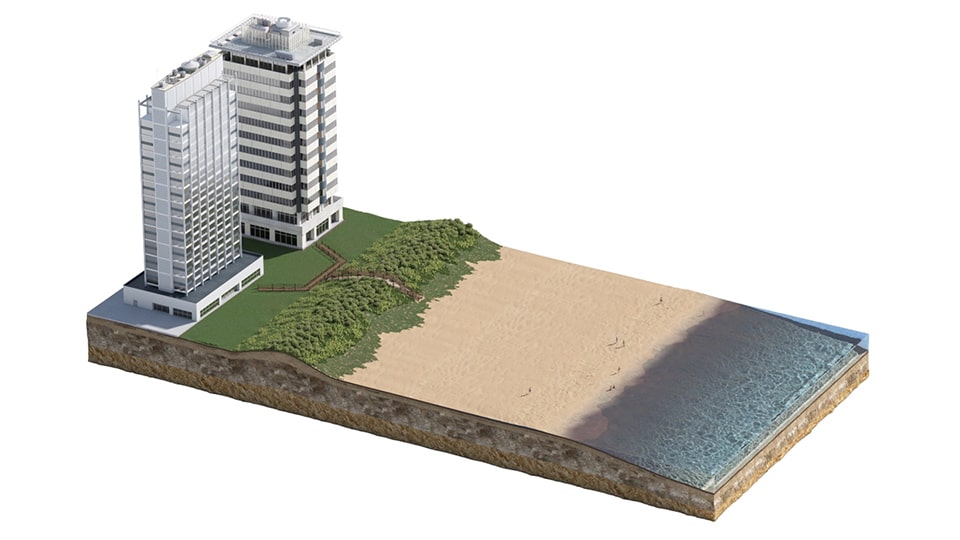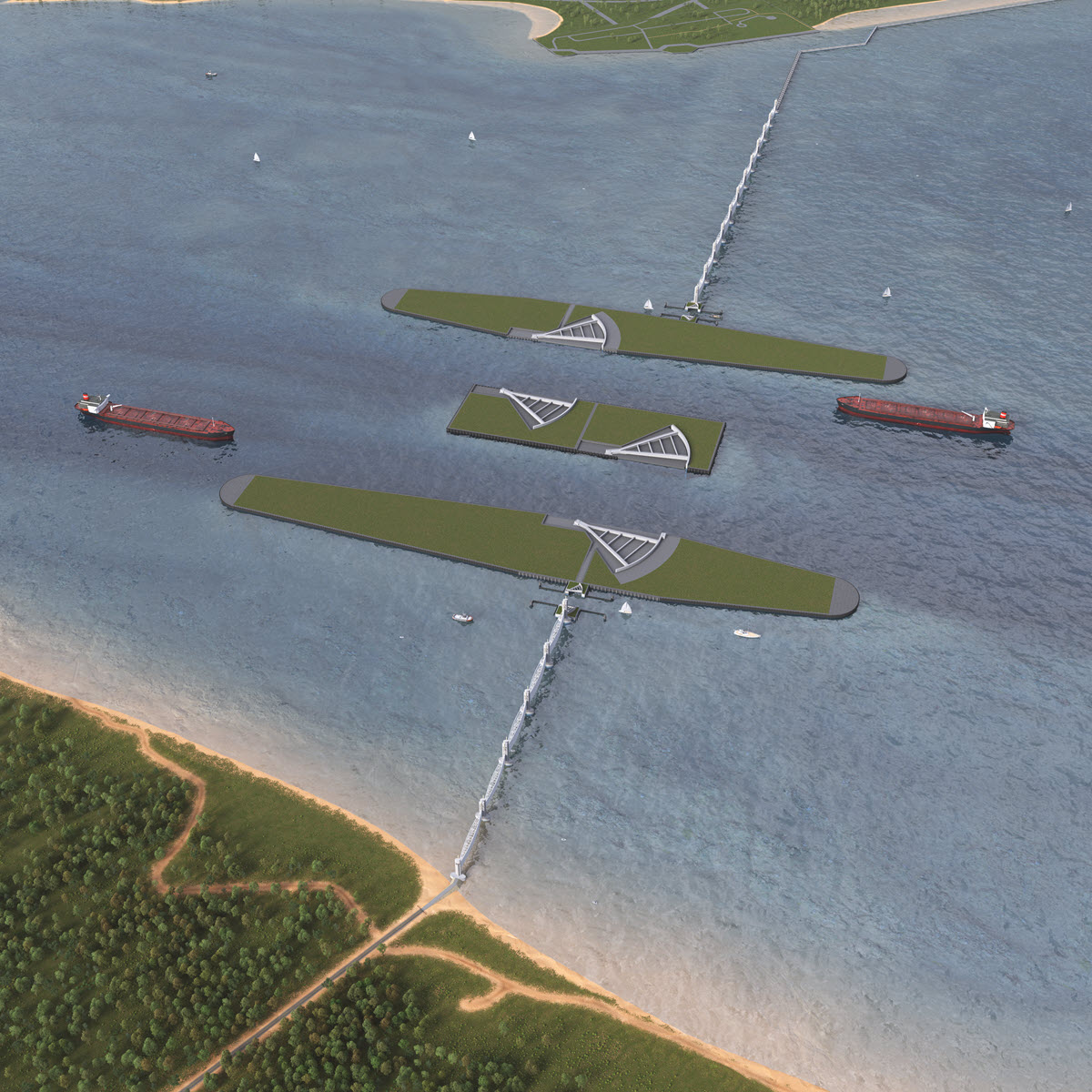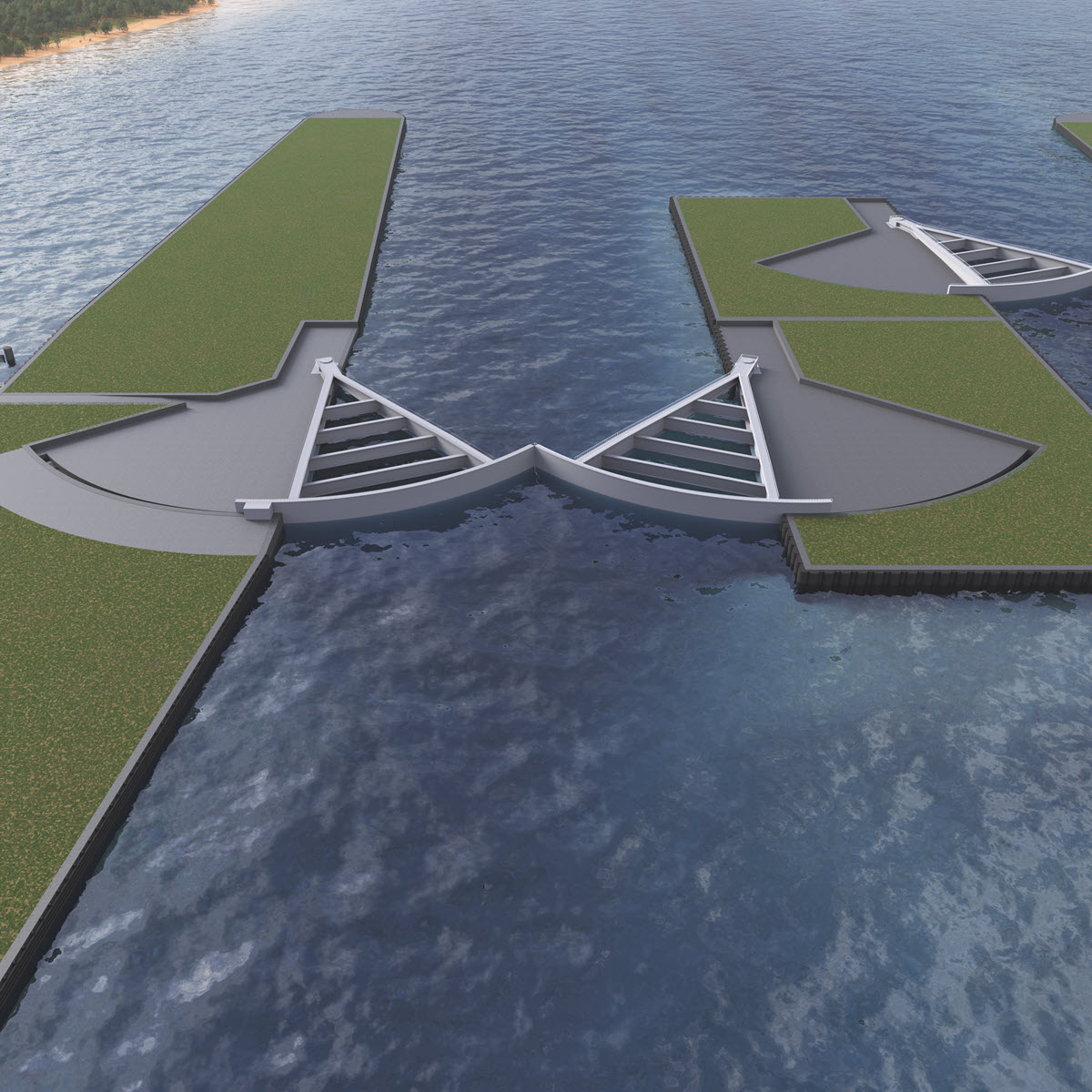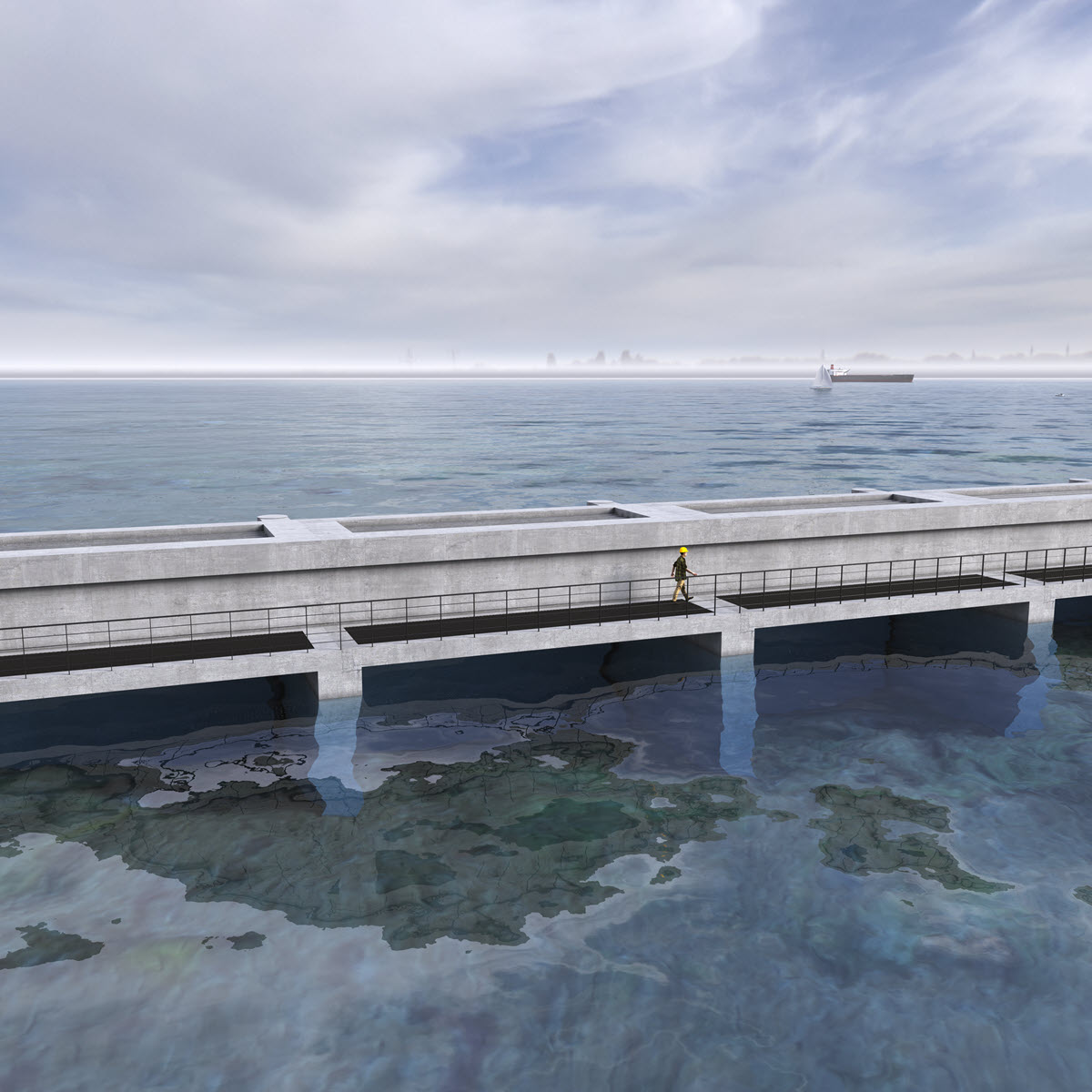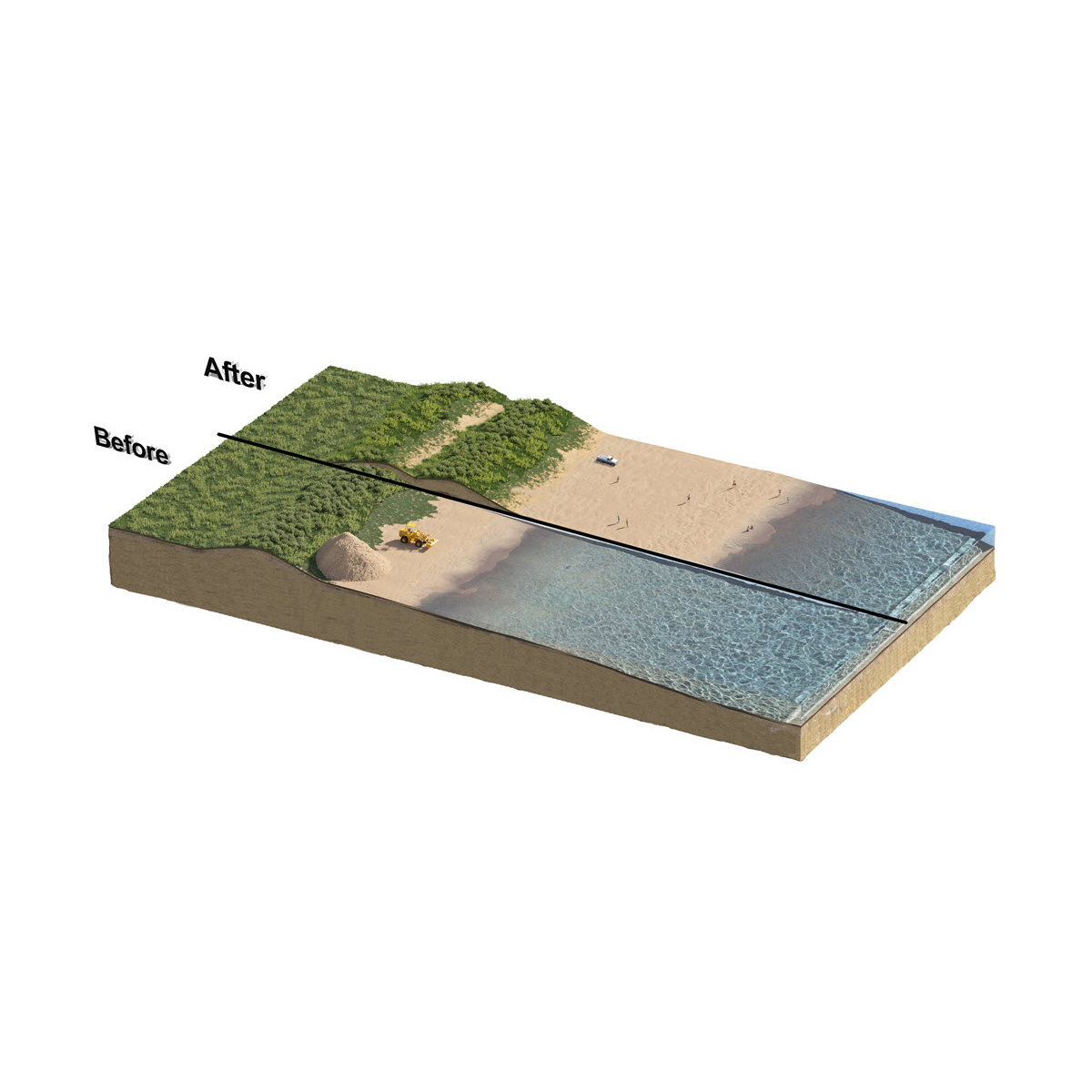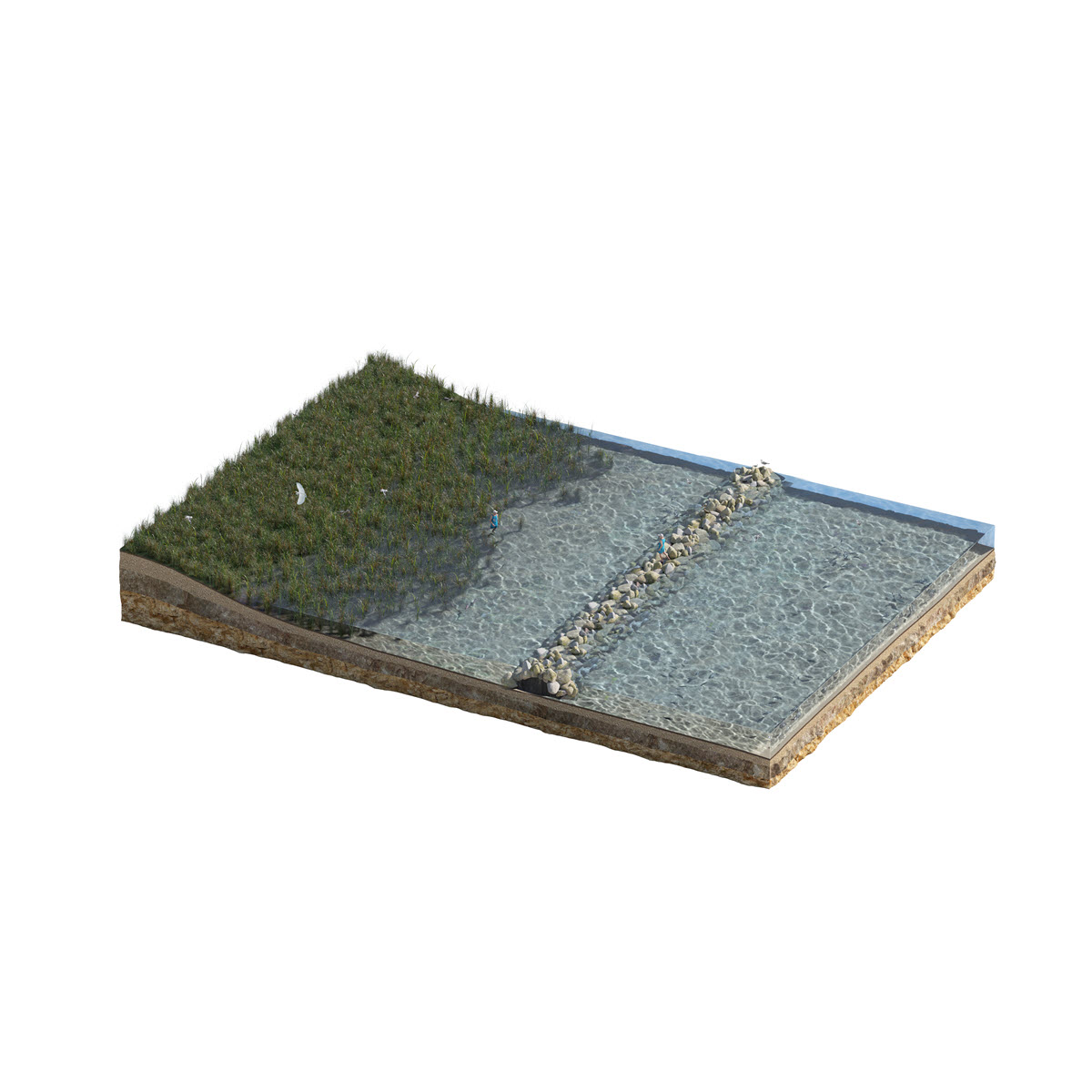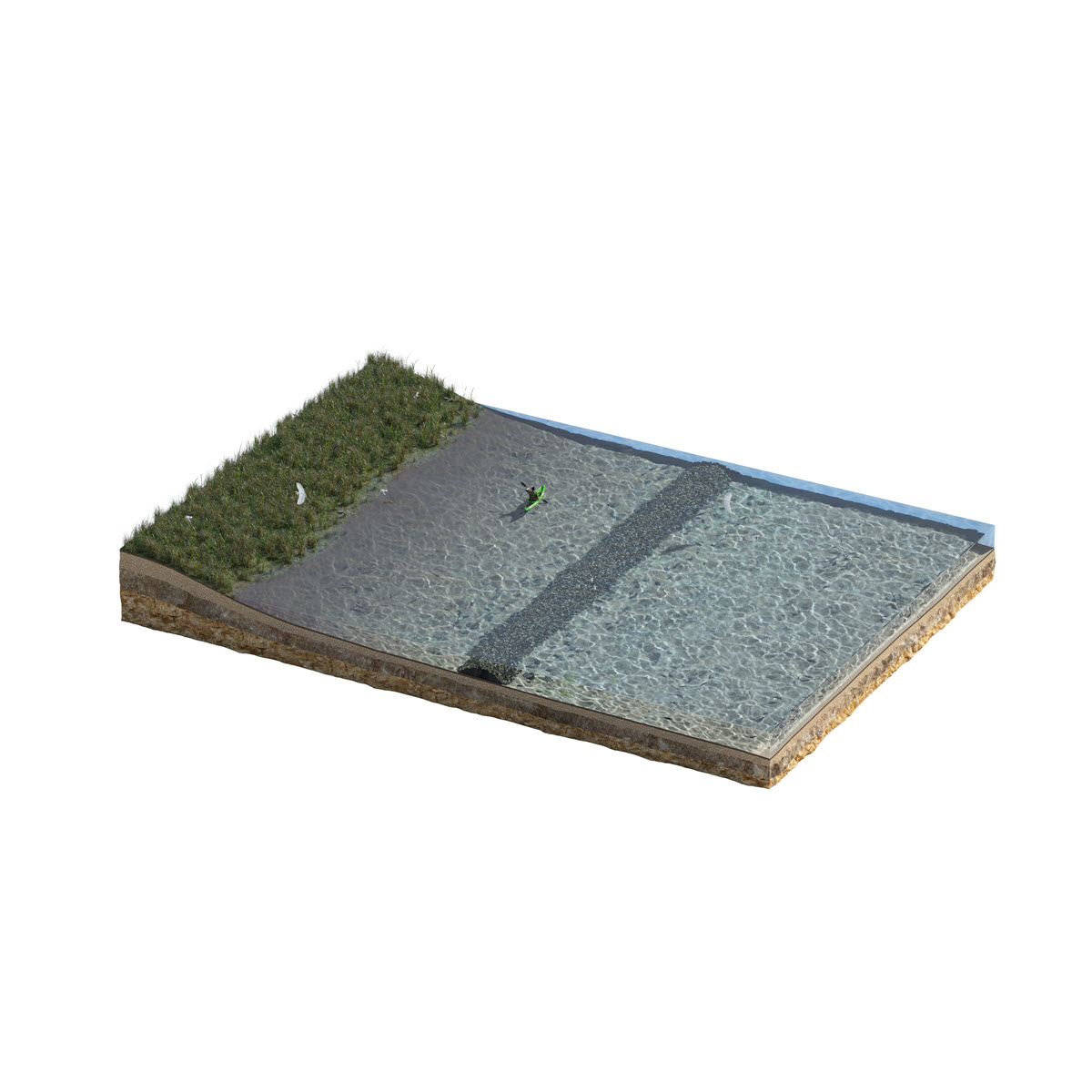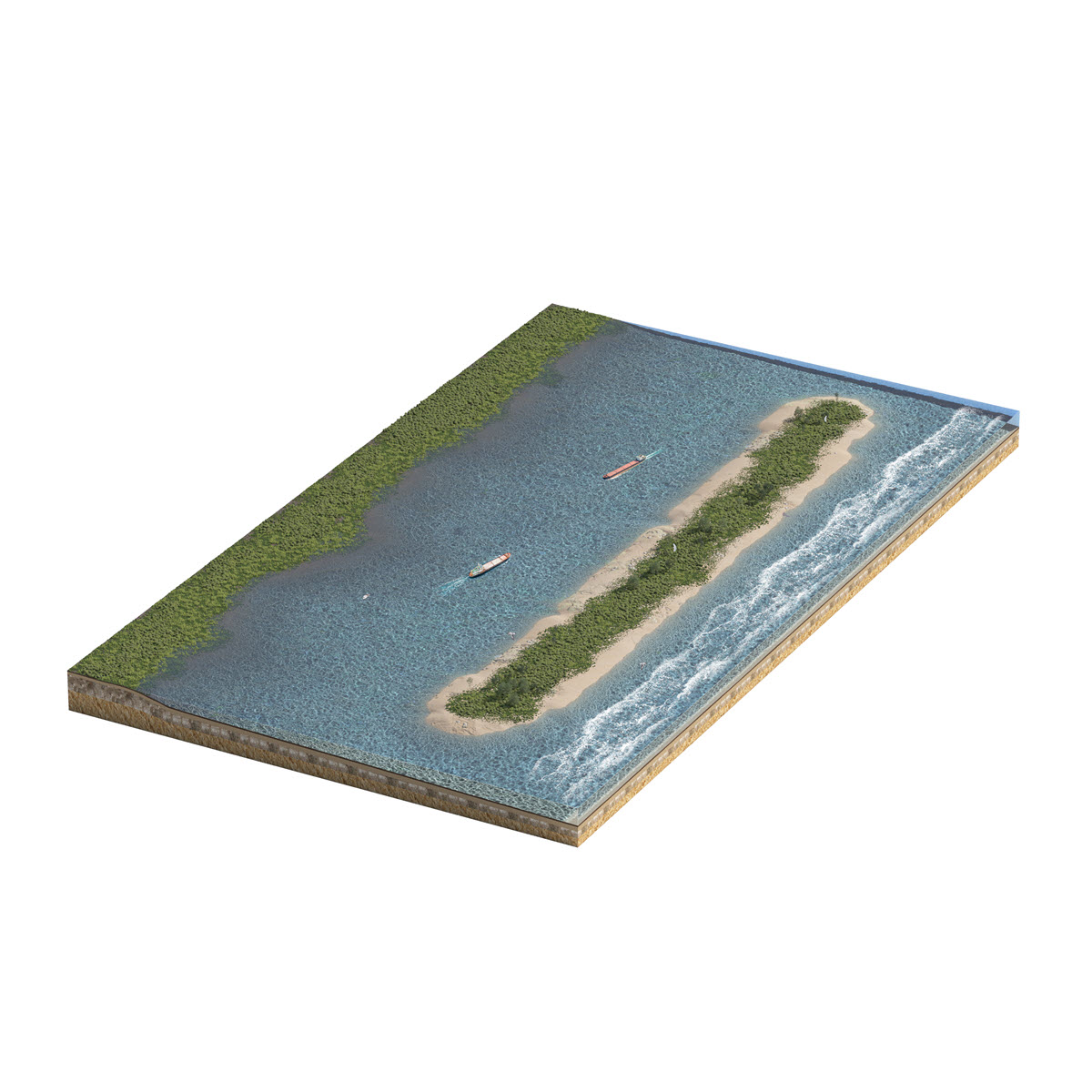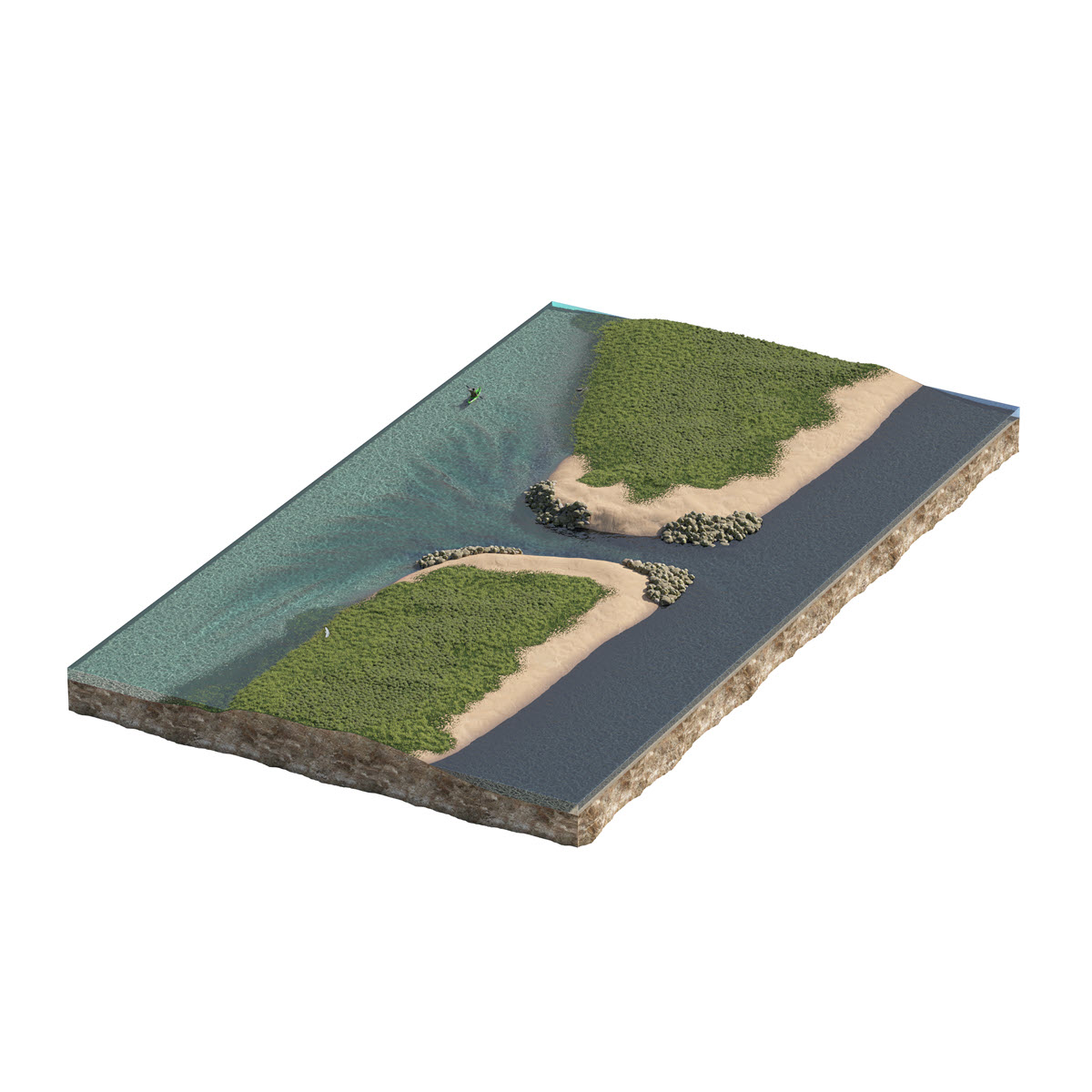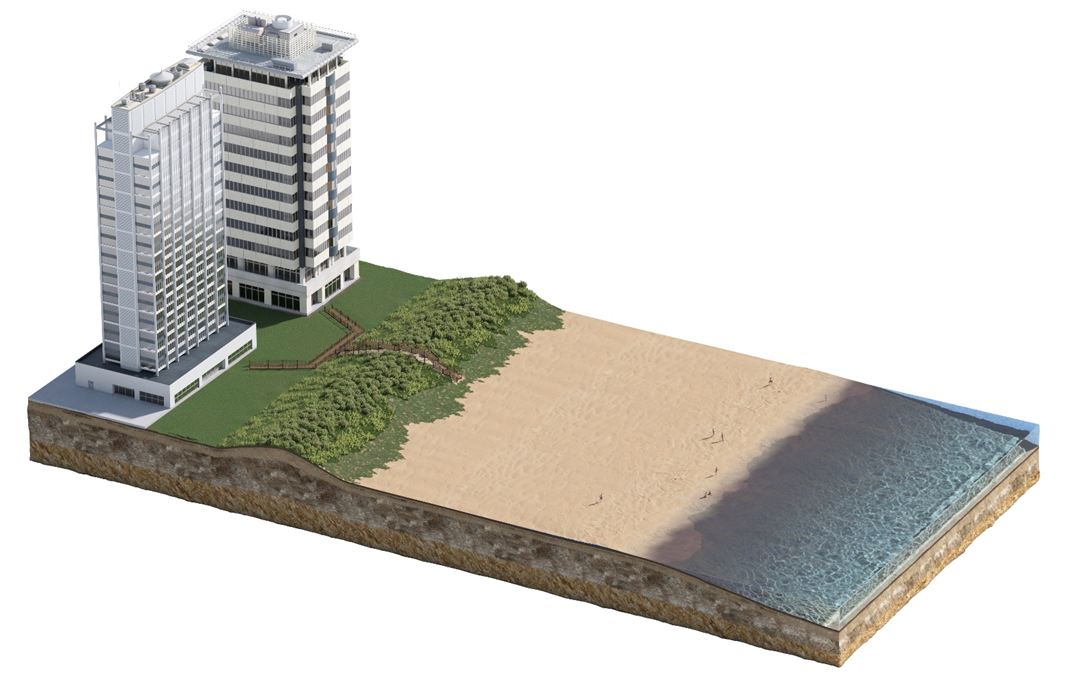Along the Texas coast, vital resources critical to the social, economic, and environmental welfare of the nation are at risk.
When coastal storms damage homes, businesses, industry, infrastructure, and the natural environments of the Texas coast, the immediate fallout and the continued aftermath affects not only the people who live in these coastal counties, but also the entire state of Texas and the nation as a whole.

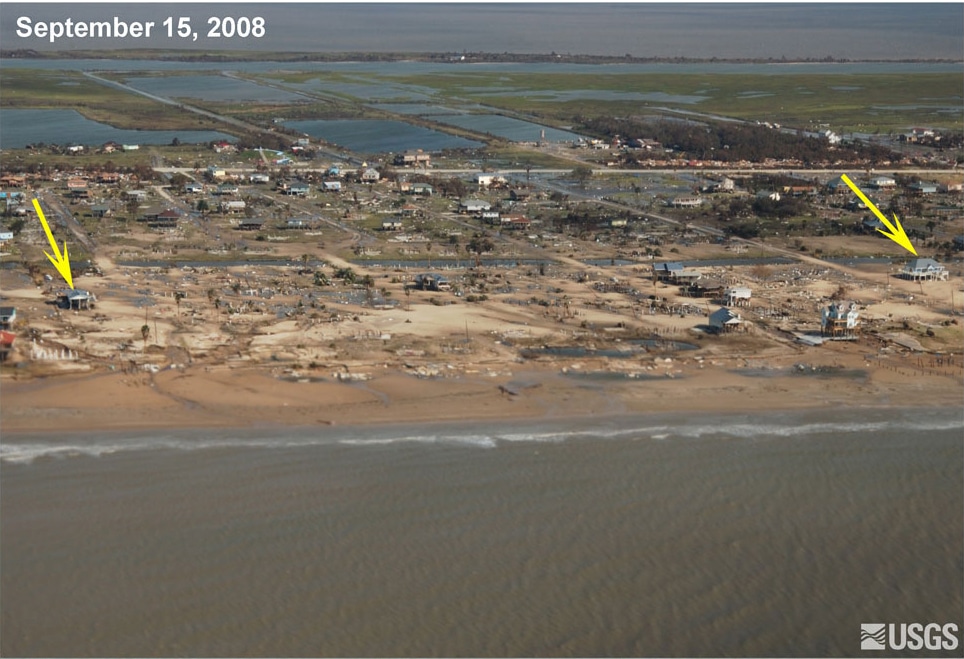
Bolivar Peninsula before and after Hurricane Ike.
Photos courtesy USGS and NOAA
From as early as 1900, when the “Great Galveston Hurricane” infamously devastated the City of Galveston and killed thousands, hurricanes have continuously tested the resiliency of the Texas coast. Most recently, in 2008, Hurricane Ike caused over $30 billion in storm-related damages to the upper Texas coast, with storm surge impacting thousands of Texas homes and businesses around Galveston Bay, scraping Bolivar Peninsula nearly bare, and creating a debris line 15 feet tall and 40 miles long in Chambers County. Furthermore, the hurricane disrupted the economic engines of the Texas coast, impacting jobs, refining and petrochemical activity, energy security, and the global supply chain. Estimates of economic disruption due to Hurricane Ike exceeded $150 billion, as determined by FEMA.
In response, the United States Army Corps of Engineers (USACE) partnered with the Texas General Land Office (GLO) to deliver the Coastal Texas Protection and Restoration Feasibility Study and Environmental Impact Statement (EIS). This six-year, $20 million comprehensive study sought to identify feasible, cost-effective, and ecologically sound projects to reduce risks to public health and the economy, to restore critical ecosystems, and to advance coastal resiliency.
These efforts culminated in Lt. Gen. Scott Spellmon, USACE commanding general, signing the Chief’s Report on Sept. 16, 2021, representing the largest single investment recommendation to Congress in USACE history. Subsequently, as part of the Water Resources Development Act of 2022 (WRDA), Congress formally authorized the Coastal Texas Project to advance into design and construction, pending appropriation of funding.
The USACE Galveston District (SWG), along with its non-Federal partners the Gulf Coast Protection District (GCPD) and the GLO, will lead the delivery of this approximately $34 billion, in today’s dollars, project, representing an integrated and comprehensive coastal resiliency strategy for the Texas coast.
Project Overview
The Coastal Texas Project includes a combination of coastal storm risk management and ecosystem restoration projects that function as a system to reduce the risk of coastal storm surge damages to our coastal communities and vitally important industries, and to restore degraded coastal ecosystems. Focused on redundancy and robustness, the Coastal Texas Project provides increased resiliency along the Texas coast and is adaptable to future conditions, including sea level rise.
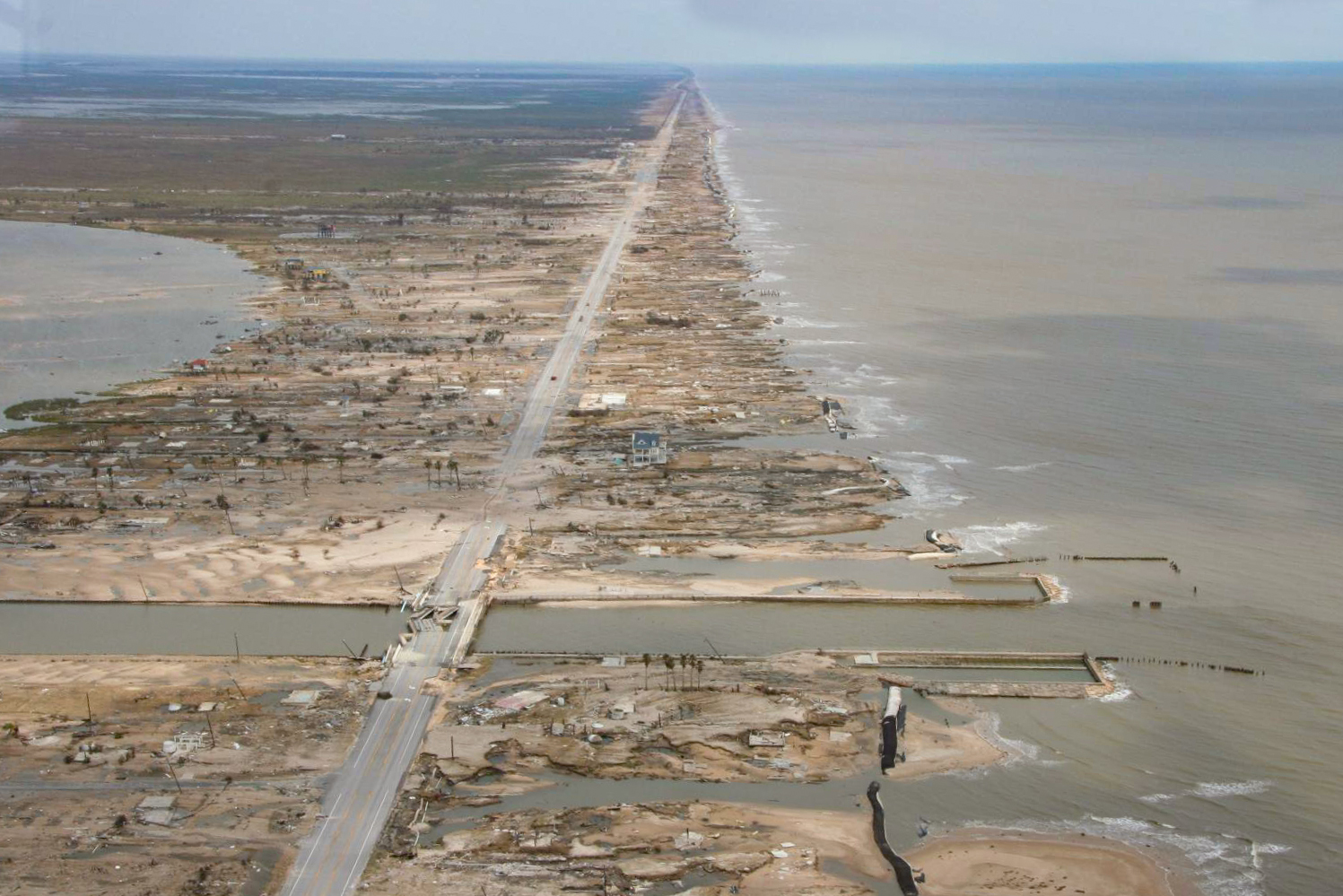
Bolivar Peninsula in the aftermath of Hurricane Ike.
The Coastal Texas Project consists of:
A visual overview of the Coastal Texas Project.
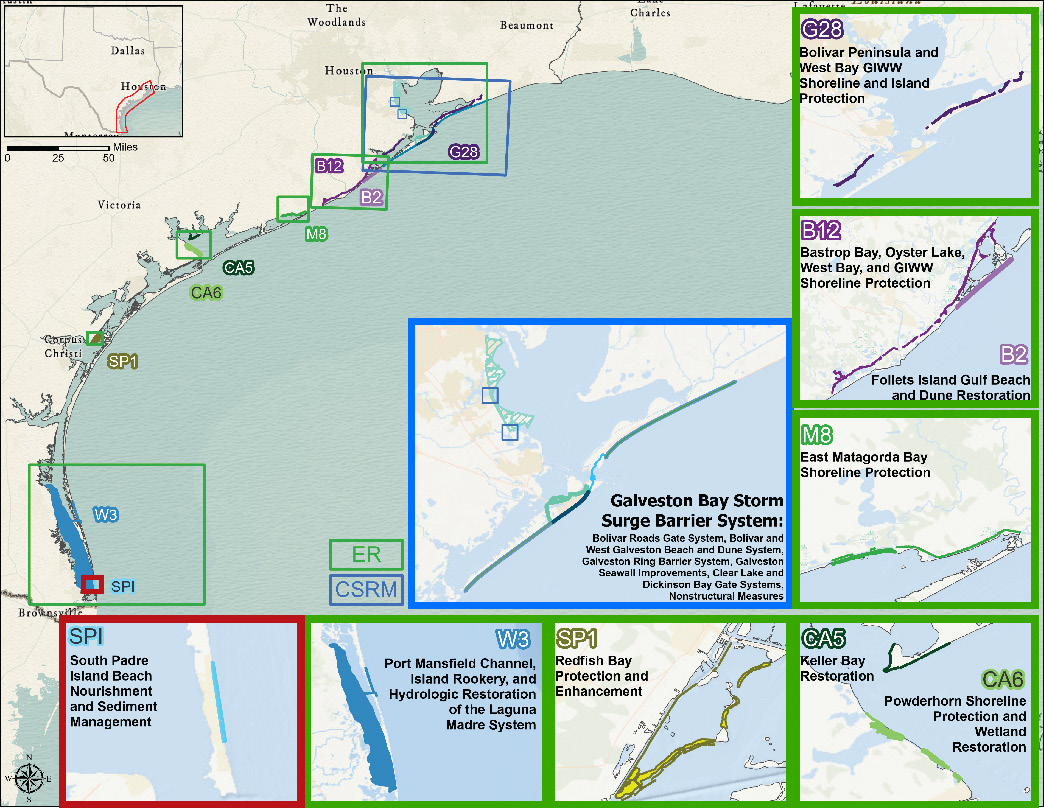
Project Schedule
Project Schedule
The Coastal Texas Project is comprised of 18 unique projects that could take up to 20 years to build, depending on the pace of funding. Ensuring compliance with all environmental laws and regulations, including the National Environmental Protection Act (NEPA), is critical to the implementation strategy.
Using a Tiered NEPA approach, projects have been categorized as either Type 1 or Type 2. Type 1 projects met all environmental compliance requirements as part of the 2021 Environmental Impact Statement, which was published alongside the final study report. For these projects, implementation will move ahead as soon as funding is available and designs are complete, assuming no significant change in site conditions or project design. Six ecosystem restoration projects have been classified as Type 1.
“The Coastal Texas Project is not only an important safety measure, but it will save money in the long term by softening the destructive power of storms along the Gulf Coast. This is a win-win, not just for Texans, but for taxpayers nationwide.”
U.S. Senator Ted Cruz
For the remainder the projects, classified as Type 2, additional environmental analyses and preparation of supplemental NEPA assessments will be required before the projects can move into construction. This process provides additional time for designs to be advanced, for the potential impacts to be better quantified, for mitigation plans (if necessary) to be prepared of further refined, and for additional agency consultation and public review. All components of the Galveston Bay Storm Surge Barrier System are classified as Type 2 and require additional environmental evaluation and review prior to their construction.
Project Timeline
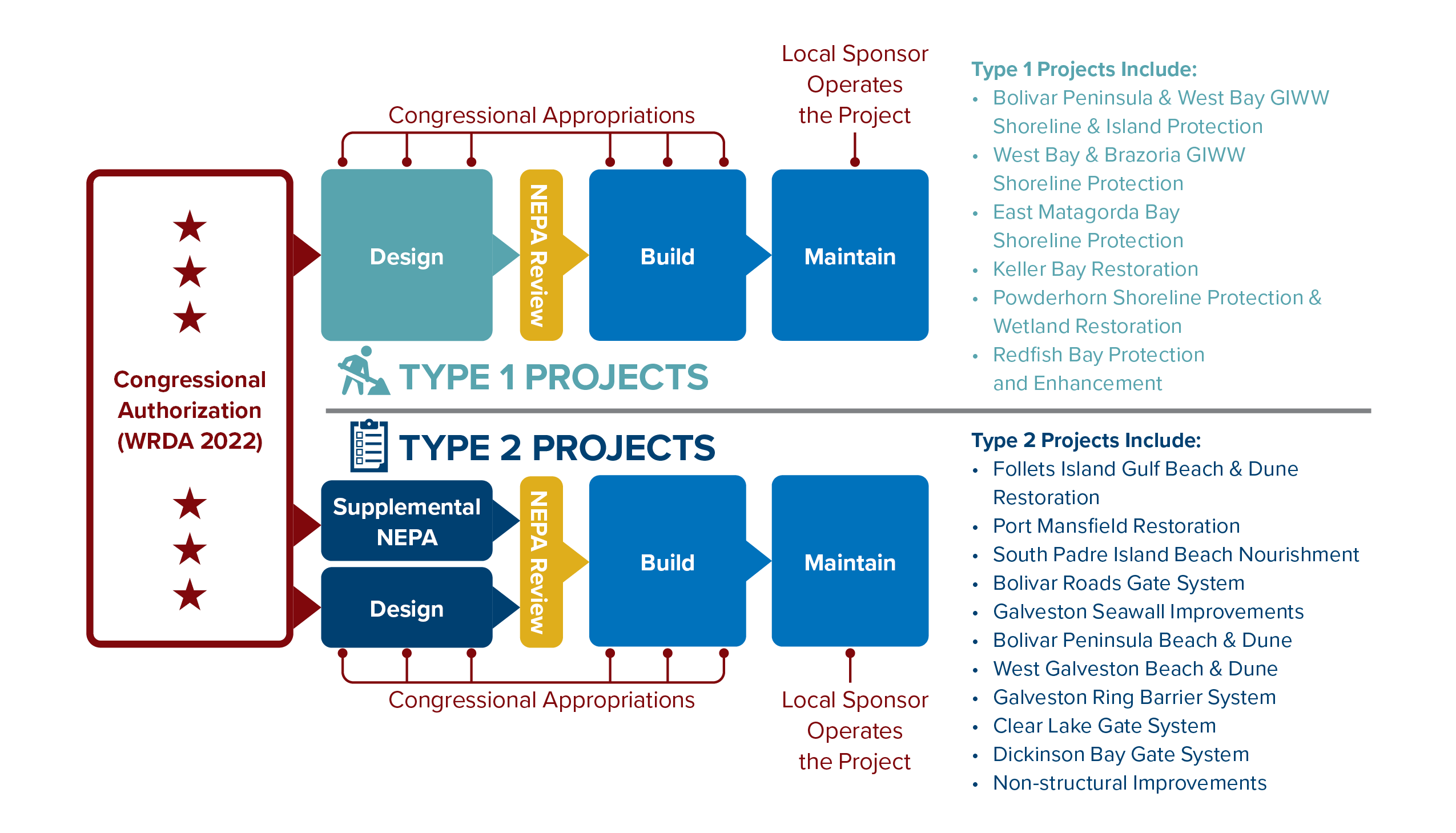
Galveston Bay Storm Surge Barrier System
Galveston Bay Storm Surge Barrier System
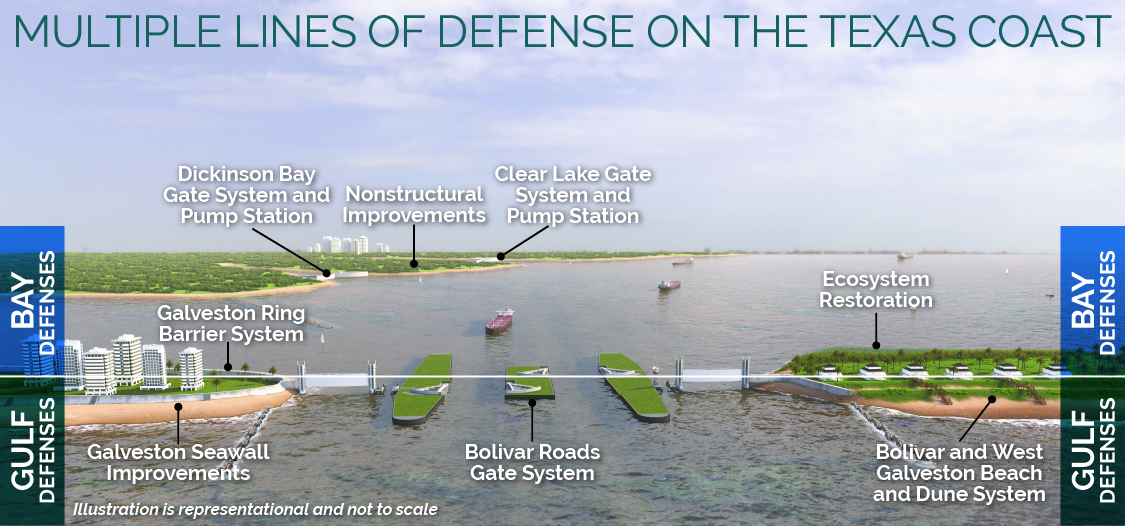
The Galveston Bay Storm Surge Barrier System is comprised of eight unique projects, split into gulf defenses and bay defenses, as illustrated above. This includes the integration of structural and non-structural coastal storm risk management actions with ecosystem restoration actions to improve the resiliency of coastal communities and the living shoreline.
The gulf defenses separate Galveston Bay from the Gulf of America to reduce storm surge volumes entering the bay and to provide direct protection against storm surge for communities on the barrier island. The largest single component of the Galveston Bay Storm Surge Barrier System and the gulf defenses is the Bolivar Roads Gate System, an approximately 2-mile-long closure structure between Galveston Island and Bolivar Peninsula. Critically, this multi-part gate system will remain open unless the region is threatened by a tropical storm event, maintaining both navigation and environmental flows.
“The Bolivar Roads Gate System, which is the series of gates planned between Galveston Island and the Bolivar Peninsula, will save lives and protect many critical industries that bolster the state’s economy and the nation’s security in the inevitable event of another hurricane.”
U.S. Senator John Cornyn (Texas)
The bay defenses enable the system to manage residual risks from the run-up of water contained within the Galveston Bay system, plus any additional gulf surge that overtops the gulf line of defense. The bay defenses also provide further resiliency against variations in storm track and intensity and relative sea level change.
The Galveston Bay Storm Surge Barrier System also integrates with measures included in the Coastwide Ecosystem Restoration Plan to protect the shoreline from erosion and restore marshes and oyster reefs, which enhance the resiliency of the adjacent structural and natural and nature-based risk reduction measures. In addition, mitigation will be provided to offset the direct and indirect impacts of the Galveston Bay Storm Surge Barrier System. As currently formulated, more than 1,300 acres of habitat are proposed to be created or enhanced as mitigation.
Gulf Defense Components:
- The Bolivar Roads Gate System, across the entrance to the Houston Ship Channel, between Bolivar Peninsula and Galveston Island;
- 43 miles of beach and dune segments on Bolivar Peninsula and West Galveston Island that work with the Bolivar Roads Gate System to form a continuous line of defense against Gulf of Mexico surge, preventing or reducing storm surge volumes that would enter the bay system; and
- Improvements to the existing 10-mile Seawall on Galveston Island to complete the continuous line of defense against gulf surge.
Bay Defense Components:
- An 18-mile Galveston Ring Barrier System that impedes bay waters from flooding neighborhoods, businesses, and critical health facilities within the City of Galveston;
- Two (2) surge gates on the west perimeter of Galveston Bay (at Clear Lake and Dickinson Bay) to reduce surge volumes that push into neighborhoods around the critical industrial facilities that line Galveston Bay; and
- Complementary non-structural measures, such as home elevations or floodproofing, to further reduce bay-surge risks along the western perimeter of Galveston Bay.
Coastwide Ecosystem Restoration Plan
A Coastwide Ecosystem Restoration Plan
The Coastwide Ecosystem Restoration Plan is comprised of measures at eight locations along the coast that work in concert with the Galveston Bay Storm Surge Barrier System and the South Padre Island Beach Nourishment Project to provide redundant and resilient protection to and for Texas’ coastal ecosystems and the communities nearby. Together, the ecosystem restoration measures, split into breakwater systems, an estuarine bay system, and bayhead deltas, exemplify the Coastal Texas Project’s multiple lines of defense strategy.
The measures included in the Coastwide Ecosystem Restoration Plan address significant habitats and natural resources in the region, including numerous resources of national significance. These include the Central and Mississippi Flyways, critical coastal ecosystems including wetlands, seagrass beds, oyster reefs, and sea turtle nesting habitat. In addition, the measures provide habitat for many threatened and endangered species such as Piping Plovers, Red Knot, Whooping Crane, West Indian Manatee, and sea turtles.
The eight ecosystem restoration locations included in the Coastwide Ecosystem Restoration Plan are shown below in context with the Galveston Bay Storm Surge Barrier System and South Padre Beach Nourishment Project locations.
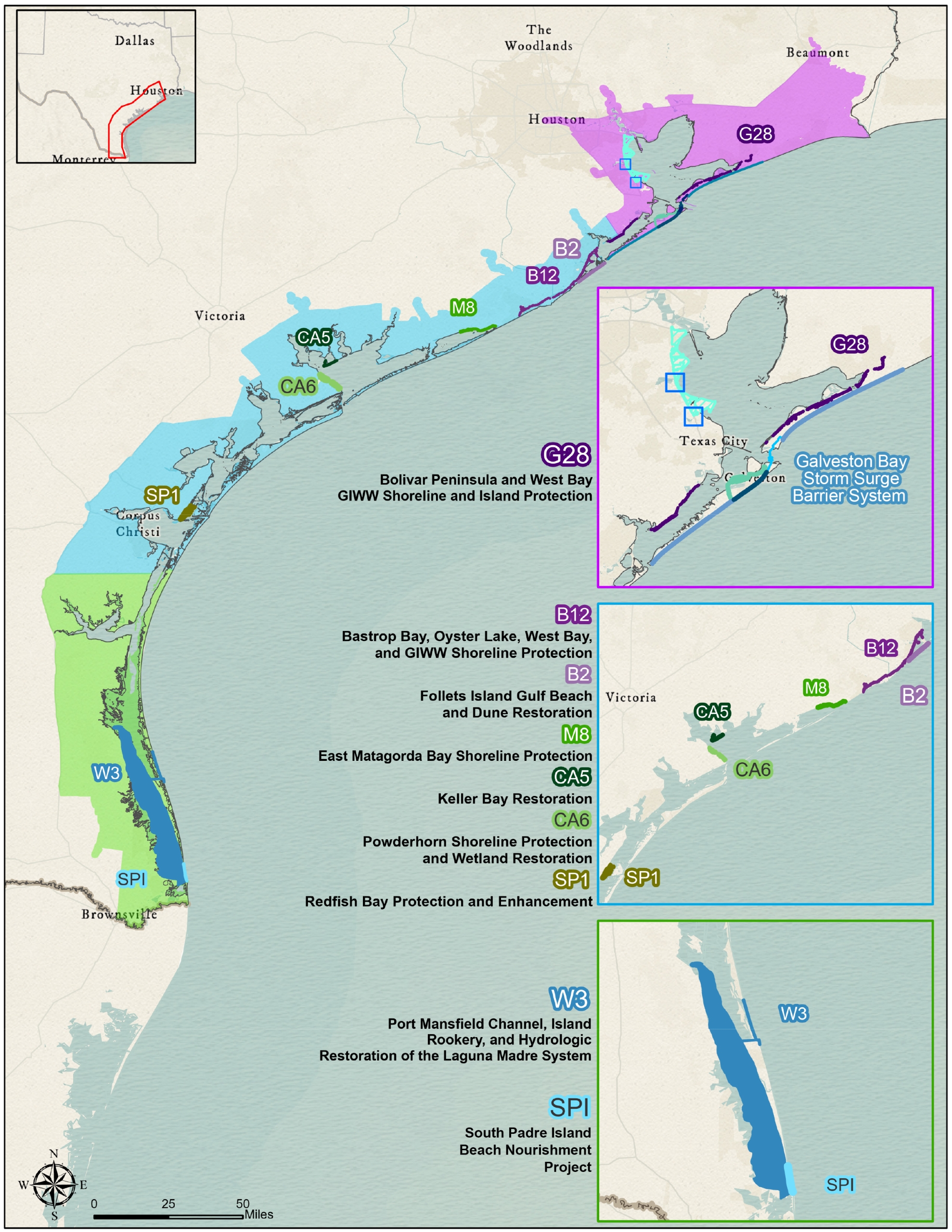
South Padre Island Beach Nourishment Project
South Padre Island Beach Nourishment Project
The South Padre Island Beach Nourishment Project will nourish the beach and dune along South Padre Island to reduce risks from coastal storm surge to businesses, residents, and infrastructure in the highly developed area of South Padre Island. In addition, nourishment will maintain beach nesting habitat for sea turtles and birds.
Beach and dune nourishment will maintain a 120-foot-wide beach and 12.5-foot dune along 2.9 miles of the developed shorefront areas of South Padre Island, from approximately East Sunny Isle Drive and East Marisol Street to the beginning of Andy Bowie Park. Renourishment will occur on a 10-year cycle for the authorized project life of 50 years (five total renourishments).
A conceptual rendering of the South Padre Island Beach Nourishment Project.
Project Cost
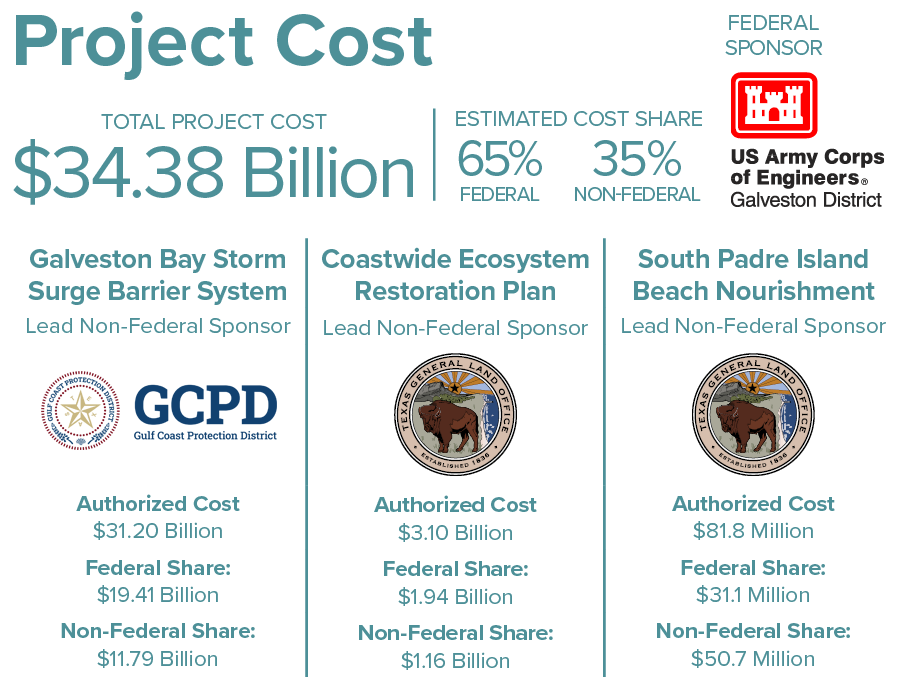
“The Texas Gulf Coast is responsible for 32% of the refining capacity for our entire country, including an estimated 40% of our country’s jet fuel that we rely on for our national security. The consequences of loss of that capacity cannot be overstated as it relates to our national security.”
U.S. Representative Lizzie Fletcher
(TX-7)
Project Benefits
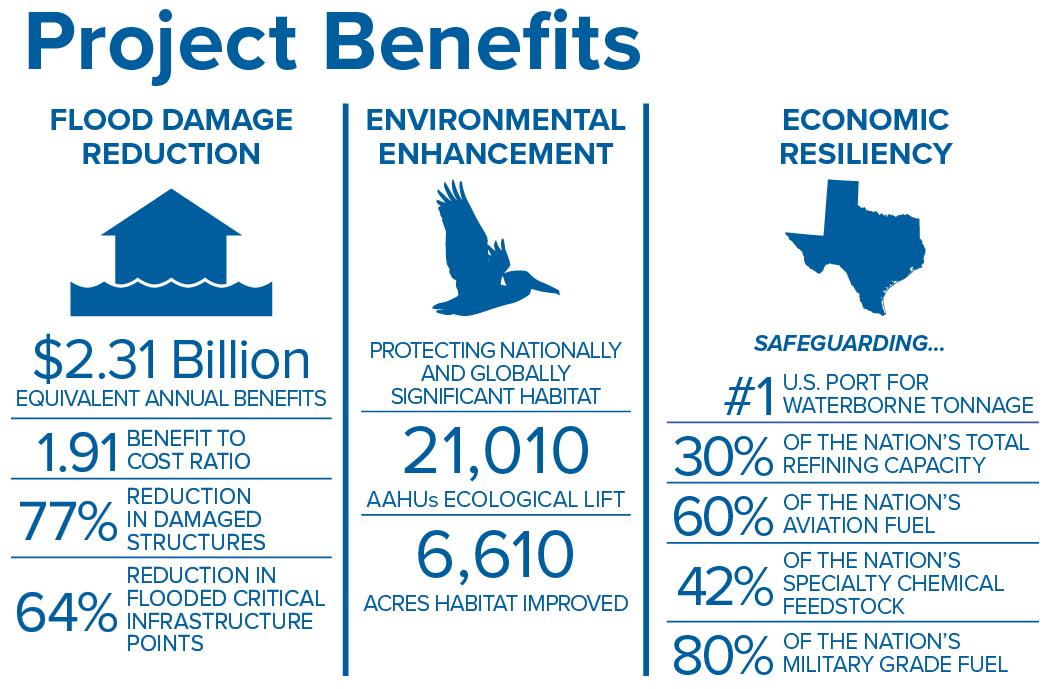
“Think of all the hurricanes and damage that we’ve heard over the years that have come in on the eastern shore of Galveston and Houston. This will help mitigate the impacts of future hurricanes and ensure critical port assets can continue to serve our country’s shipping and supply chain needs.”
U.S. Senator Shelley Moore Capito
(West Virginia)
